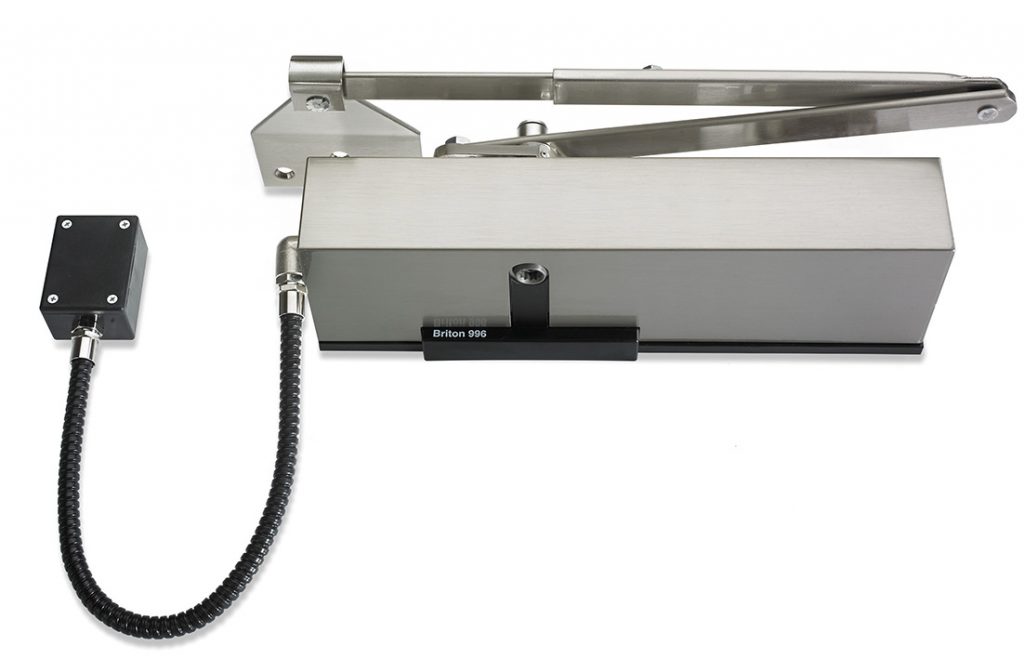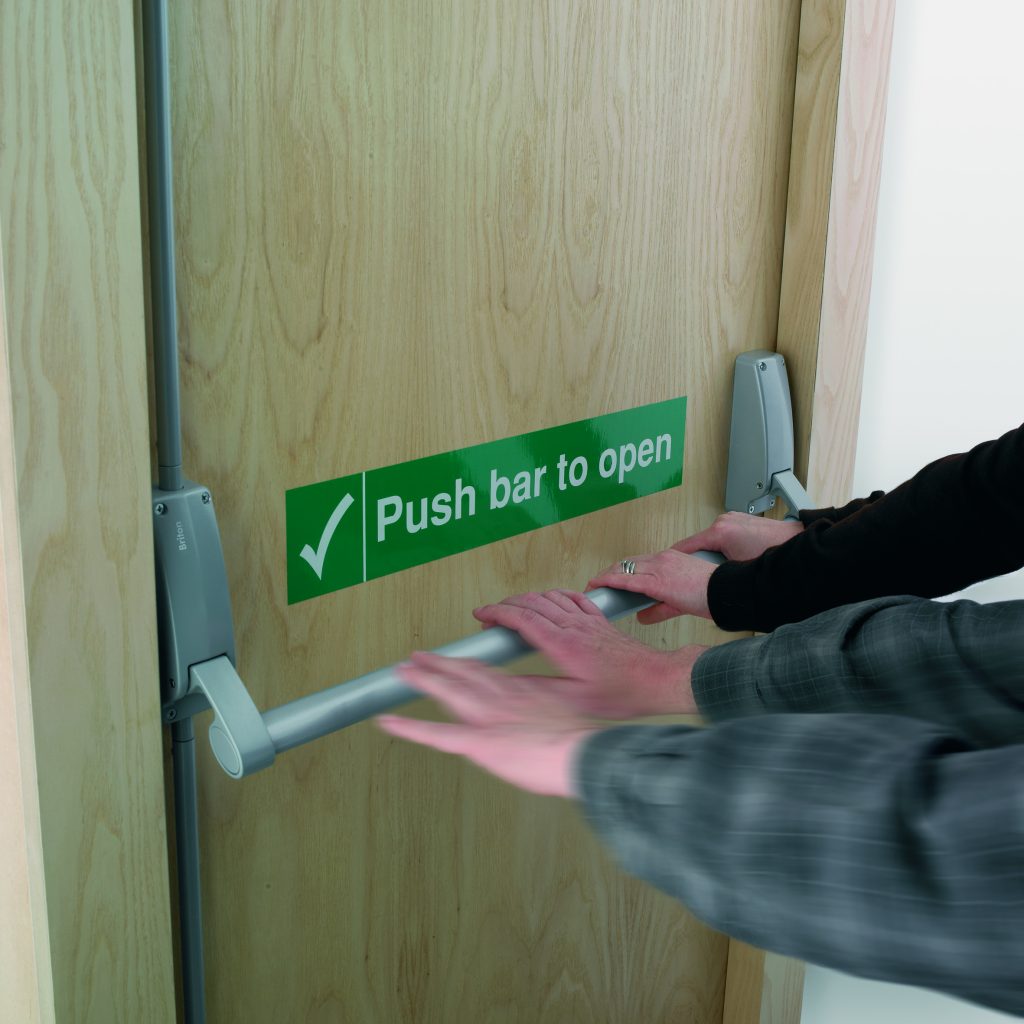 In a fire emergency, it is a race against time to prevent flames from spreading beyond control – meaning a working fire door could be the difference between life and death, says Allegion UK Commercial Leader Pete Hancox.
In a fire emergency, it is a race against time to prevent flames from spreading beyond control – meaning a working fire door could be the difference between life and death, says Allegion UK Commercial Leader Pete Hancox.
It needs no mention that the tragedy at Grenfell Tower has been a somber, sobering experience. Shock, disbelief and anger have gripped the nation in the weeks and months following the fire. There’s no question it will live long as a thorny, incredibly sad memory – especially as data has since shown at least another 211 tower blocks have failed combustibility tests following testing on their exterior cladding.
Following the tragedy, the media and nation have focused on the aforementioned cladding issues, as well as a lack of sprinkler systems in Grenfell Tower and other similar tower block buildings. Other talking points have emerged around the lack of a high ladder – which did not arrive on the scene for 32 minutes for the fire brigade. As a consequence, Mayor of London Sadiq Khan ordered an urgent review of the fire brigade kit after rescue delays.
Of course, improving those factors is a necessicity and, in due course, will raise fire safety standards all around. However, they are arguably response tactics, as opposed to prevention tactics, for a fire spreading out of control.
An area of fire safety that has been given little attention to, but deserves much more credit, is the fire door. What a good fire door system can do is buy precious time. It is a prevention method and inhibits fires from getting out of control too quickly by compartmentalising the fire.
In tall and densely populated buildings especially, trapping the fire between fire doors can stop the ‘chimney effect.’ This is where stairways and corridors combust quickly through non-fire retardant materials, ripping through the building within a matter of minutes and thus blocking access to the vital escape routes.
Whilst a fire door won’t put out a fire, we can clearly see how they would serve an important function. In Grenfell Tower’s case, they could arguably have been one of the most important factors, following the revelation about the fire service’s initial lack of a high ladder.
What the RRFSO States
The Regulatory Reform Fire Safety Order 2006 (or RRFSO) is the key regulation for building owners and operators. Under the RRFSO, not only do building owners and operators have to demonstrate that safety precuations are in place, but also they are continually reviewed and monitored.
Of the responsibilities, it includes regular fire assessments, implementing clearly defined evacuation procedures and ensuring adequate signage is in place.
Above all, though, the priority requirement is that all doors are fit for purpose in the instance of fire. That means emergency doors must open in the direction of escape, and they must not be locked or fastened in such a way that they cannot be easily and immediately opened by any person who may need to use them in an emergency. Sliding and revolving doors are, therefore, not permitted as emergency exits.
The Fire Door System – Preventing the Spread
Ultimately, it is the fire door that stops the fire from spreading. However, a fire door itself cannot work properly without its contributory parts. One intrinsic part is the door closer.
Door Closers and Linked Fire Alarms
As Approved Document B: Volume 2, which governs fire safety in dwelling houses and flats, states, all fire doors should be fitted with a self-closing device. The exceptions are fire doors to cupboards and to service ducts, which are normally kept locked shut, and fire doors within flats (although self-closing devices are still necessary on flat entrance doors).
It goes on to state that closing devices to flat entrances must be 18N in closing force – power size 3. A mechanical door closer will fulfil this requirement, but there are also electro-magnetically controlled closers available too, which would be much more user-friendly in tower blocks.
 A continual problem with fire doors is that they are heavier in nature. This makes them hard to operate for some people, for example elderly, disabled or children, who lack upper body strength or mobility. Therefore the temptation is to prop open fire doors to ease movement and accessibility, but this is illegal. A propped open fire door will render it useless in the event of a fire.
A continual problem with fire doors is that they are heavier in nature. This makes them hard to operate for some people, for example elderly, disabled or children, who lack upper body strength or mobility. Therefore the temptation is to prop open fire doors to ease movement and accessibility, but this is illegal. A propped open fire door will render it useless in the event of a fire.
Electro-magnetically controlled door closers can negate this temptation, as they will hold open doors using electro-magnets, and release them when a fire alarm is sounded. An example of this is the Briton 996 door closer.
Latchbolt Monitors
Another piece of hardware technology that can contribute to a good fire door system in multiple occupancy buildings is the latchbolt monitor.
As mentioned, fire doors are often propped open, but that is not the only thing that stops them from performing properly. If they do not close fully, i.e. latch to the door frame, then the intumescent seals around the fire door won’t stop smoke and toxic chemicals from leaking through.
In a tower block, this scenario is common. Air pressure conditions are constantly changing, due to the weather, open windows, doors etc., which can prevent a fire door from latching fully. To guard against this, a latchbolt monitor can be installed to the latch, which sends a signal to a central monitoring system that alerts if any doors aren’t latched fully.
Electro-mechanical Panic Bars
 A recent development of the door hardware industry is the electro-mechanical panic bar – a traditional panic bar from the inside that allows access control functionality from the outside by using an electronic motor to control the latch.
A recent development of the door hardware industry is the electro-mechanical panic bar – a traditional panic bar from the inside that allows access control functionality from the outside by using an electronic motor to control the latch.
While not an essential to fire door safety, they are a good addition for tower blocks due to the access control functionality they can provide. Use of pinpads, transponders and keycards instead of mechanical keys on communal entrances can allow for audit activity on those doors, and allow security managers to pinpoint doors that are being left open and at what specific times.
Signage and Resident’s Fire Door Safety Checklist
All fire doors should be clearly marked, as per the RRFSO guidelines.
Again, use of fire doors will be part of daily life in a tower block. However, there can be no guarantees that they won’t be misused. Clear and correct signage must be applied to make users aware that they should be kept shut.
A good practice would also be to ensure residents are clear on how to determine if a fire door is legal or not. A basic checklist and gap tester is available to all from Allegion, which will allow residents to test and report for gaps around the fire door, latching issues or otherwise etc. Making residents aware of fire door safety can allow for a more agile approach to fire safety testing.
Only as good as the sum of its parts
In a fire, time is crucial. There needs to be time for the fire services to reach the scene of the fire, for occupants to evacuate, and if evacuation is not possible, then to move on to the next safe points of the building.
Fire-resistant doors are available that have been tested to protect against fire spreading for up to 30, 60, 90 and 120 minutes. However, if they are not working as they should be, then no matter how good the cures are to follow, the fire will have that chance of breaking out of control and causing devastating effects.
In most cases, a fire door will never be called into action for the entirety of its lifespan. However, when we need it most, we want it to work as it has been specified to do. The simple measures we have listed above will go a long way towards ensuring fire doors are respected as they should be.
